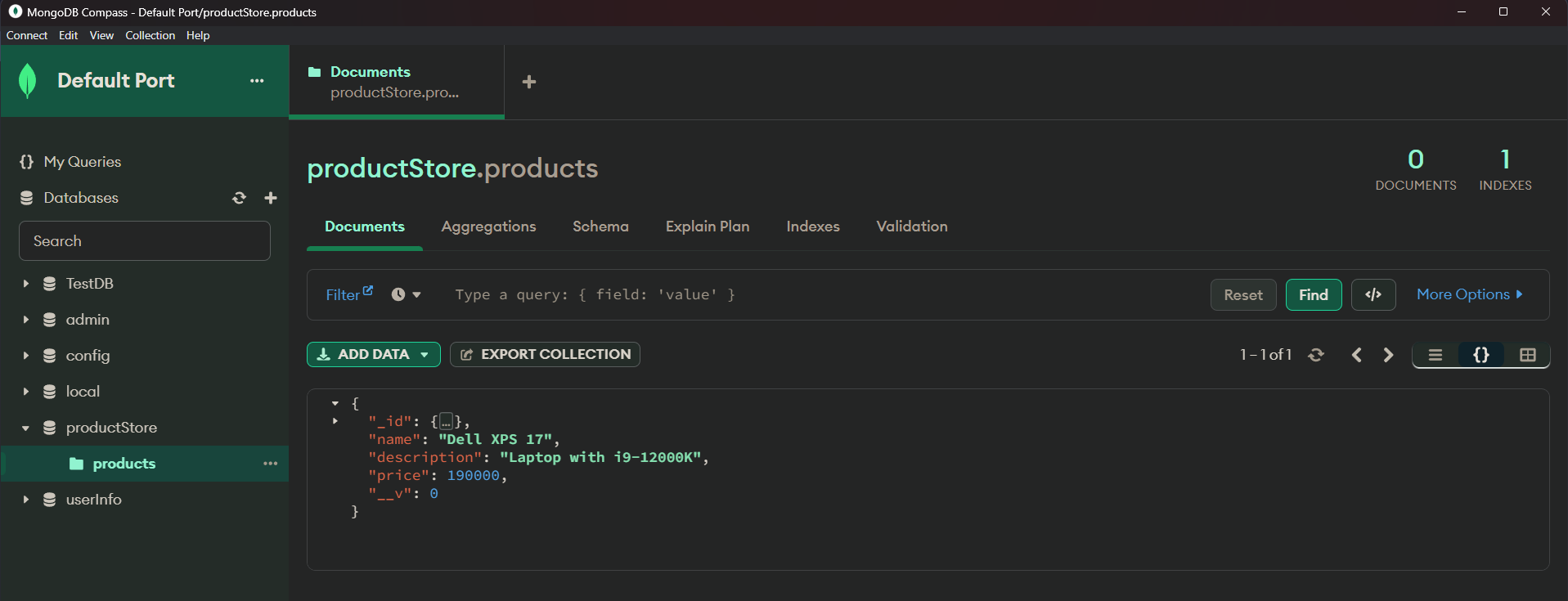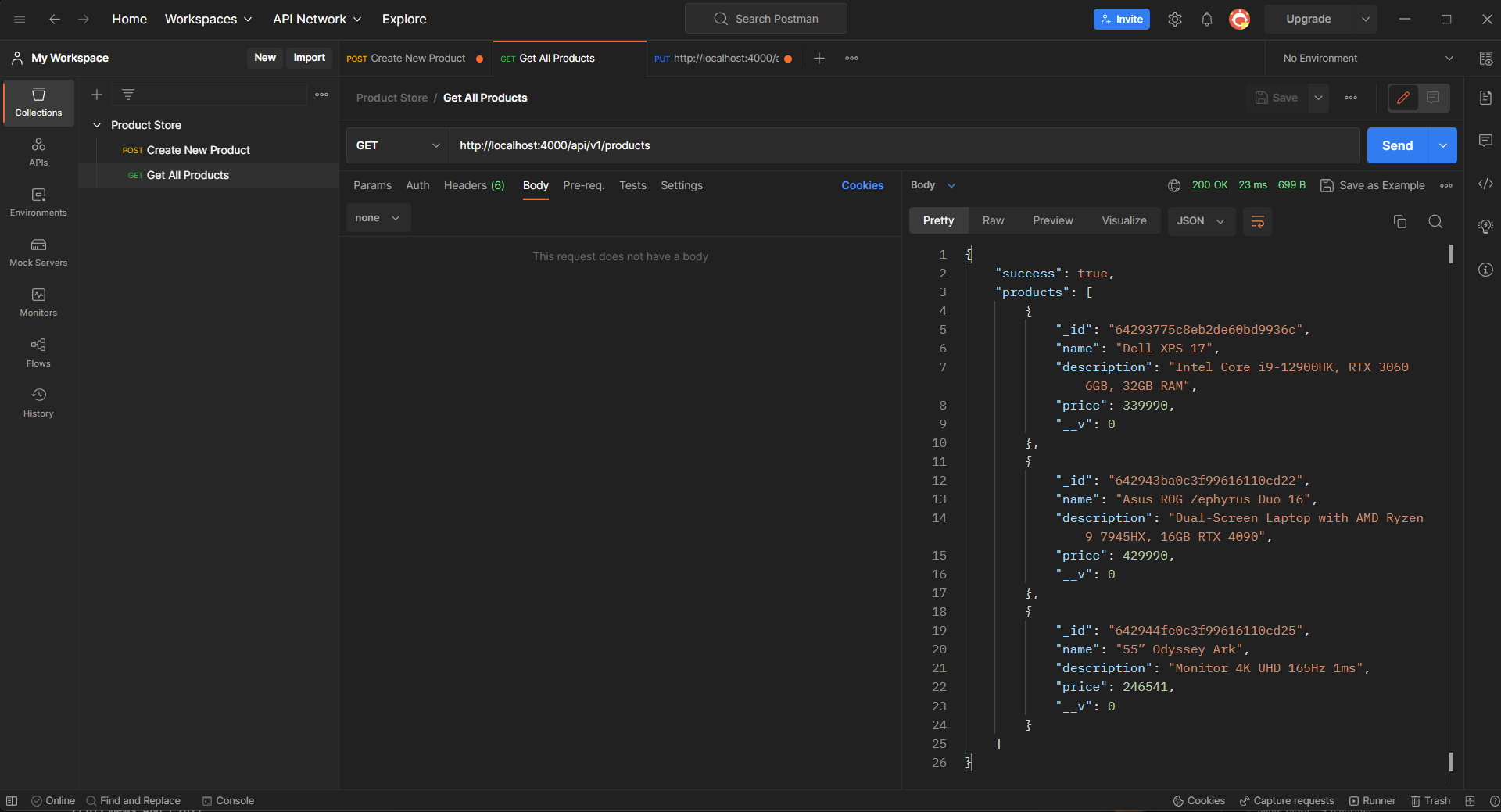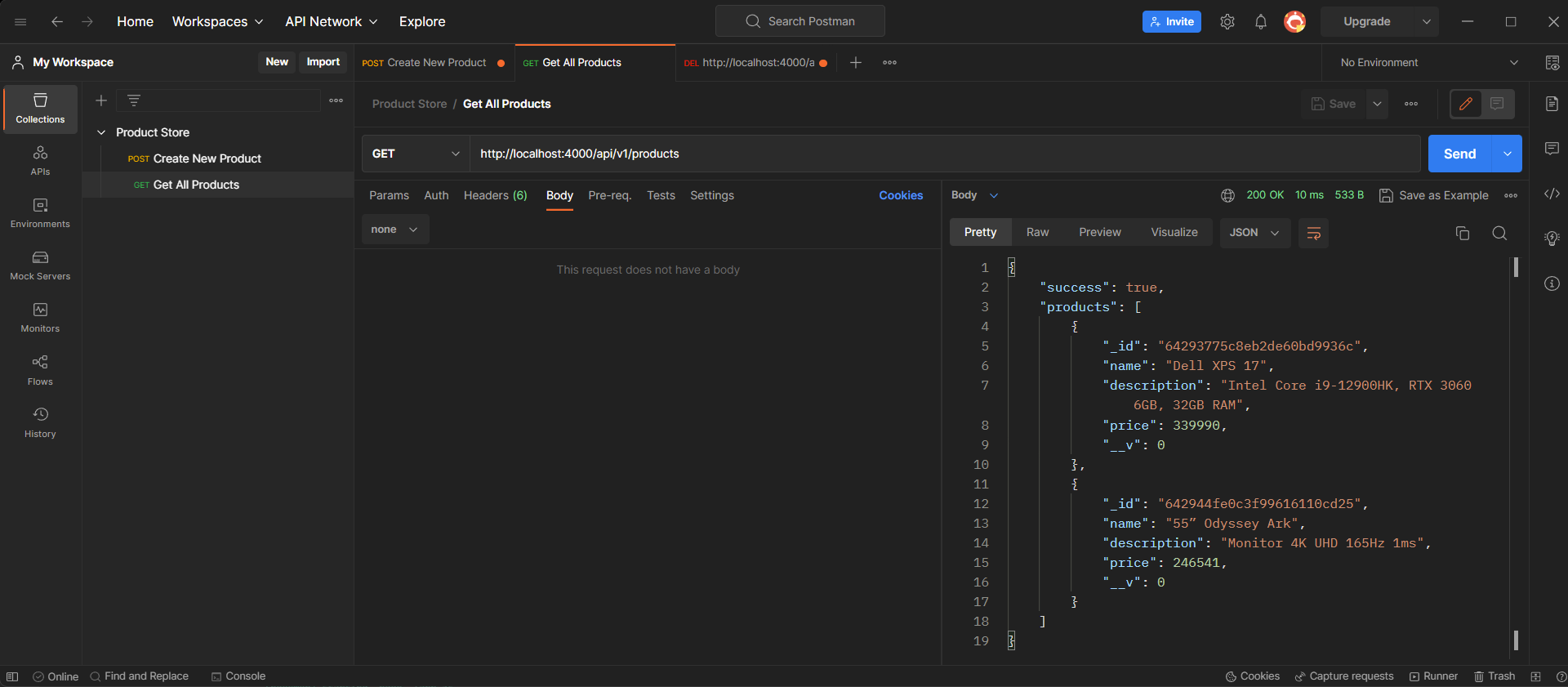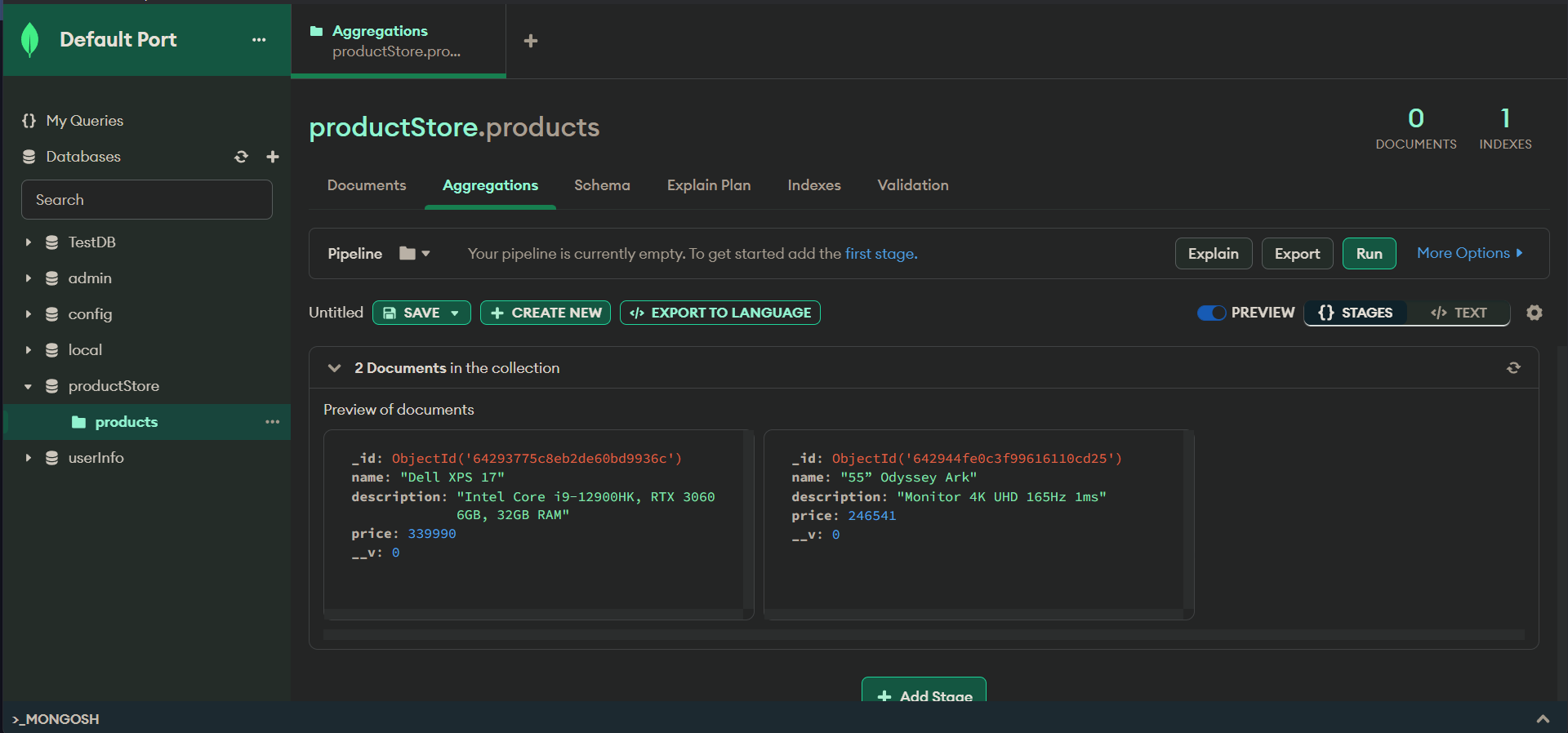
RESTful API
Understanding HTTP status codes
Mozzila Docs (opens in a new tab)
Creating a API connected MongoDB using Express
- Importing modules, like express, mongoose, body-parser
const express = require("express");
const mongoose = require("mongoose");
const bodyParser = require("body-parser");- Establishing Connection with MongoDB using
mongoose
mongoose
.connect("mongodb://127.0.0.1:27017/productStore", {
useNewUrlParser: true,
useUnifiedTopology: true,
})
.then(() => {
console.log("Connected to MongoDB successfully");
})
.catch((error) => {
console.log(error);
});- Creating App reference using Express
const app = expresss();- Using bodyParser in app to avoid this bug,

app.use(bodyParser.urlencoded({ extended: false }));- Using express.json() in app to avoid this bug, where only "success" shows up, and it misses "name", "email", "
password" from
response.json().
app.use(express.json());- Defining port and host,
const PORT = 4000;
const HOST = "localhost";- Defining a schema of object and creating a new model
const productSchema = new mongoose.Schema({
name: String,
description: String,
price: Number,
});
const Product = new mongoose.model("Product", productSchema);- Reading the path to receive data, from POST() to create new product
app.post("/api/v1/product/new", async (request, response) => {
const product = await Product.create(request.body);
response.status(201).json({
success: true,
product,
});
});- Setting up the web server, to listen to host:port
app.listen(PORT, HOST, () => {
console.log(`Server is working: http://${HOST}:${PORT}`);
});

- Get all products, from
/api/v1/products,
app.get("/api/v1/products", async (request, response) => {
const products = await Product.find();
response.status(200).json({ success: true, products });
});
- Modify product detail usiing product id from
/api/v1/product/:id
app.put("/api/v1/product/:id", async (request, response) => {
let product = await Product.findById(request.params.id);
product = await Product.findByIdAndUpdate(request.params.id, request.body, {
new: true,
useFindAndModify: true,
runValidators: true,
});
response.status(200).json({
success: true,
product,
});
});
- Delete product detail usiing product id from
/api/v1/product/:id
app.delete("/api/v1/product/:id", async (request, response) => {
const product = await Product.findById(request.params.id);
if (!product) {
return response.status(500).json({
success: false,
message: "Product not found",
});
}
await product.deleteOne();
response.status(200).json({
success: true,
product,
});
});



Adding Backend Validation using YUP
-
Installing
yuppackage for validation usingnpm install yup. -
Defining the schema to product,
/validation/validateProduct.js,
const yup = require("yup");
const productSchema = yup.object({
name: yup.string().required().min(5).max(30),
description: yup.string().min(10).max(100).required(),
price: yup.number().required().max(10),
});
module.exports = productSchema;- Creating a middleware that takes schema as parameter, to validate the request with the schema,
/middleware/validateMiddleWare.js
const validation = (schema) => async (request, response, next) => {
const body = request.body;
try {
await schema.validate(body);
next(); // next() is used to keep moving forward
} catch (error) {
return response.status(422).json({ error: error });
}
};
module.exports = validation;- Importing
validation()andschemainapp.js, and in Rest API functions call, addvalidation(schema)as parameter.
const validation = require("./middleware/validateMiddleware");
const validateSchema = require("./validation/validateProduct");
app.post(
"/api/v1/product/new",
validation(validateSchema),
async (request, response) => {
const product = await Product.create(request.body);
response.status(201).json({
success: true,
product,
});
}
);